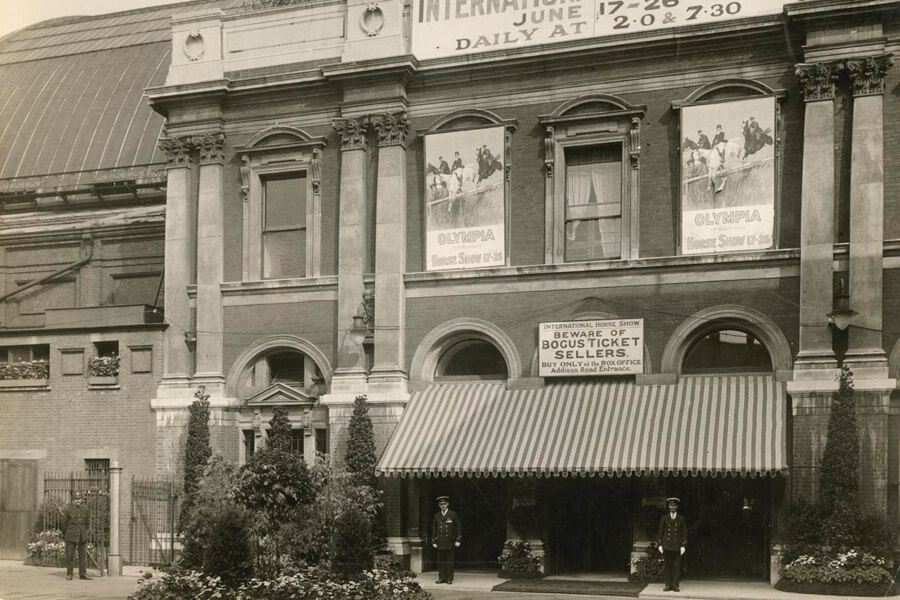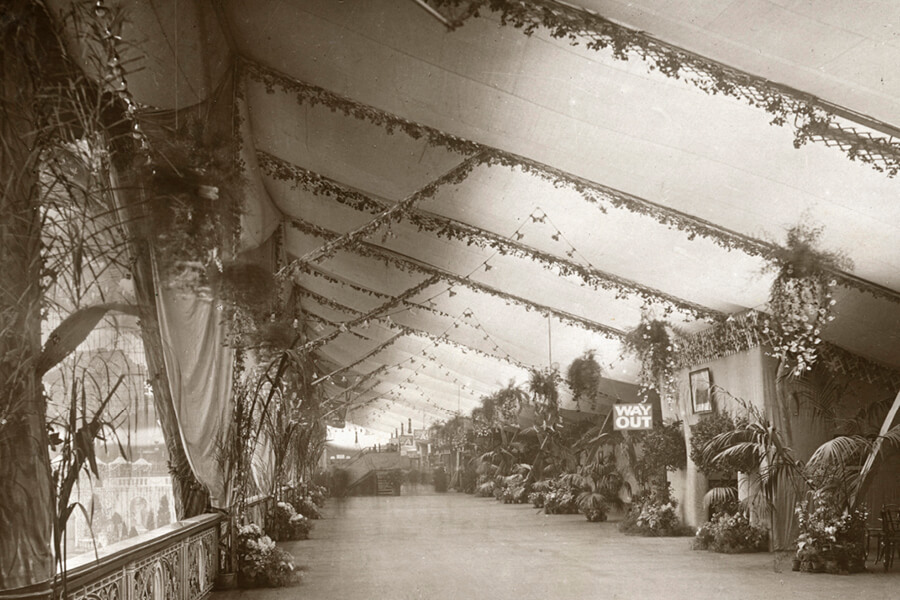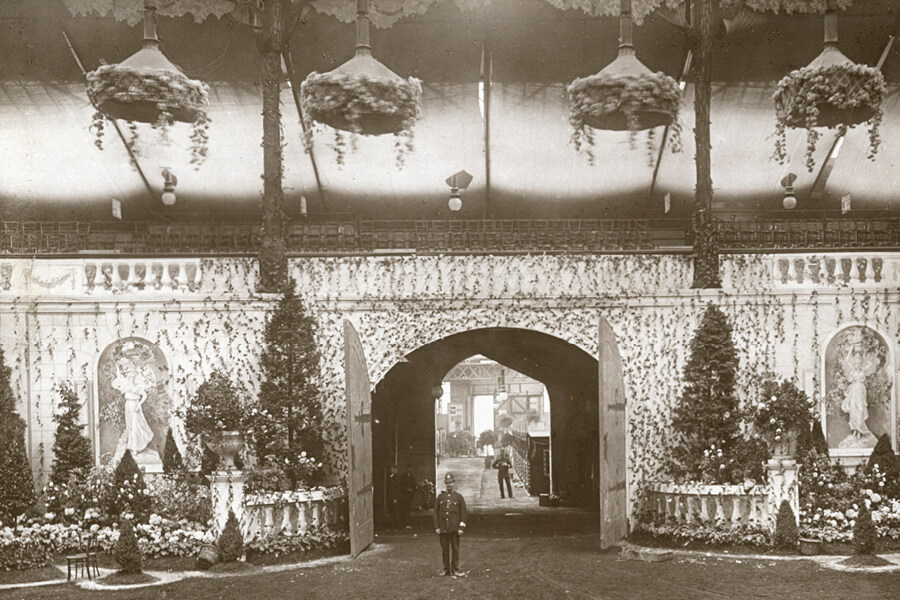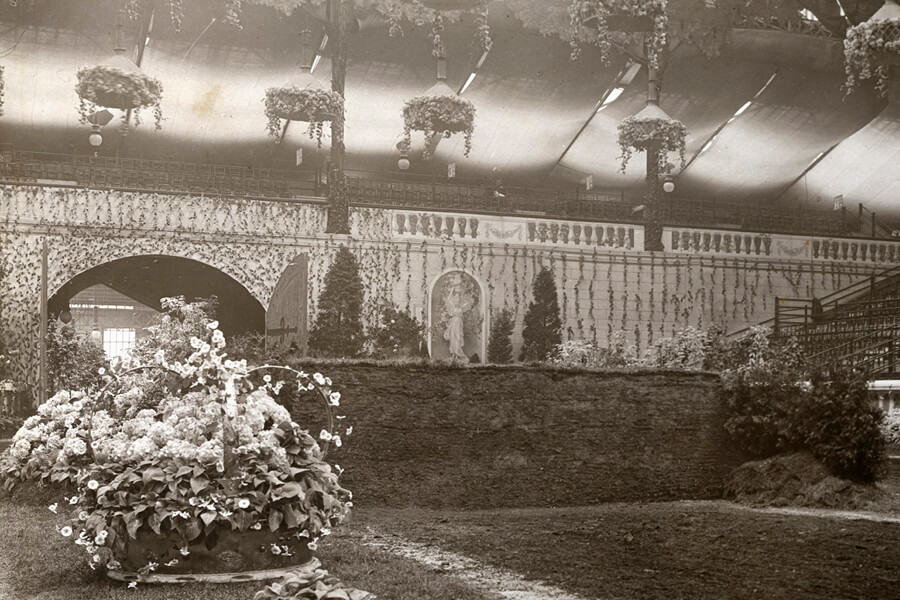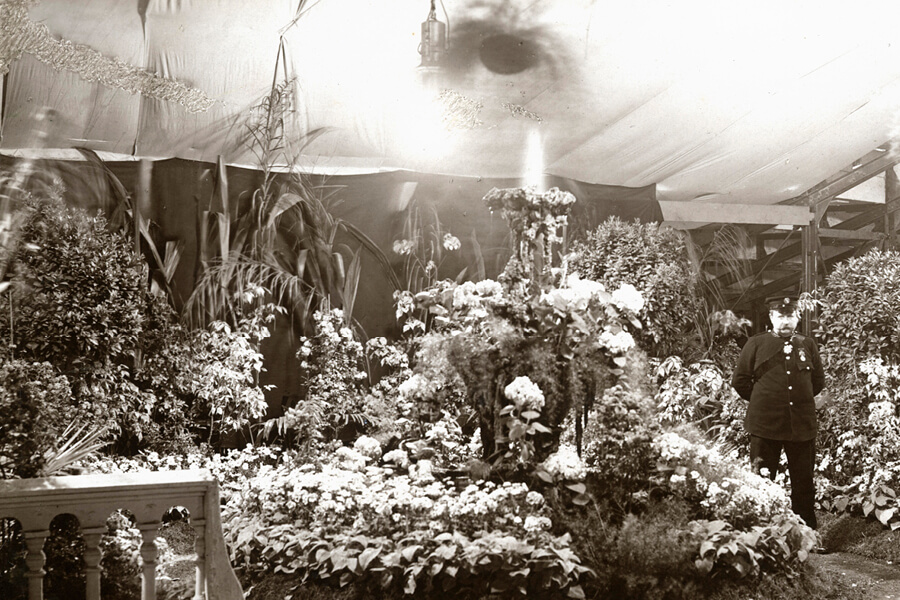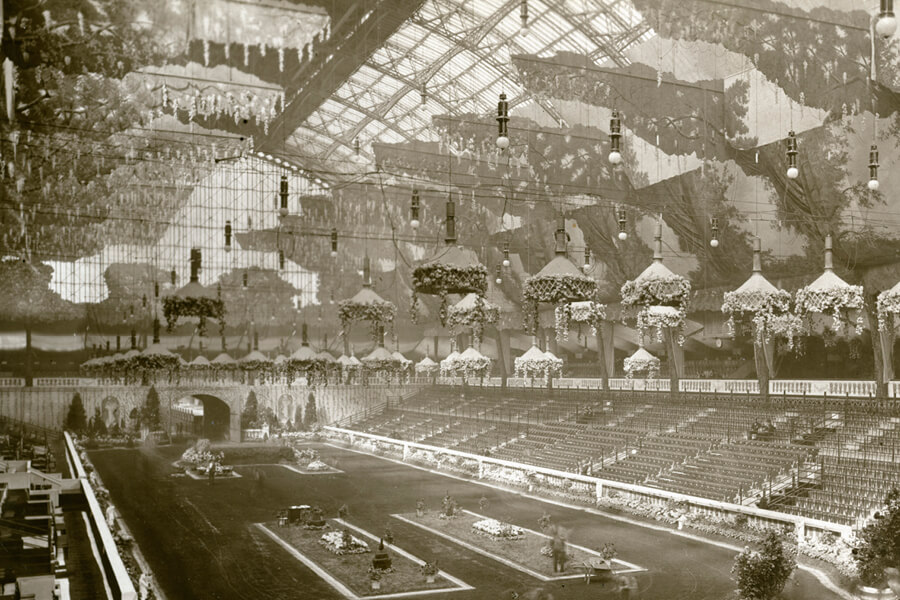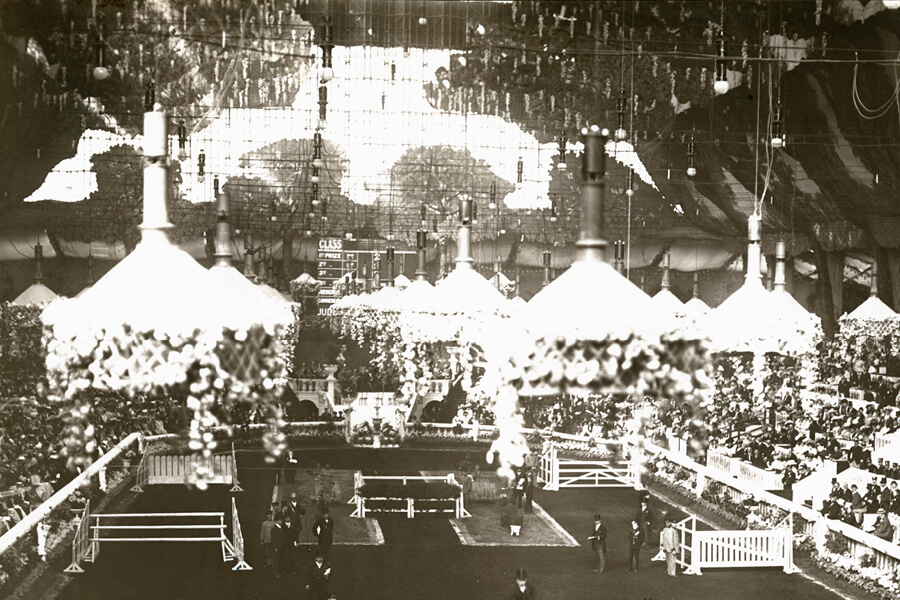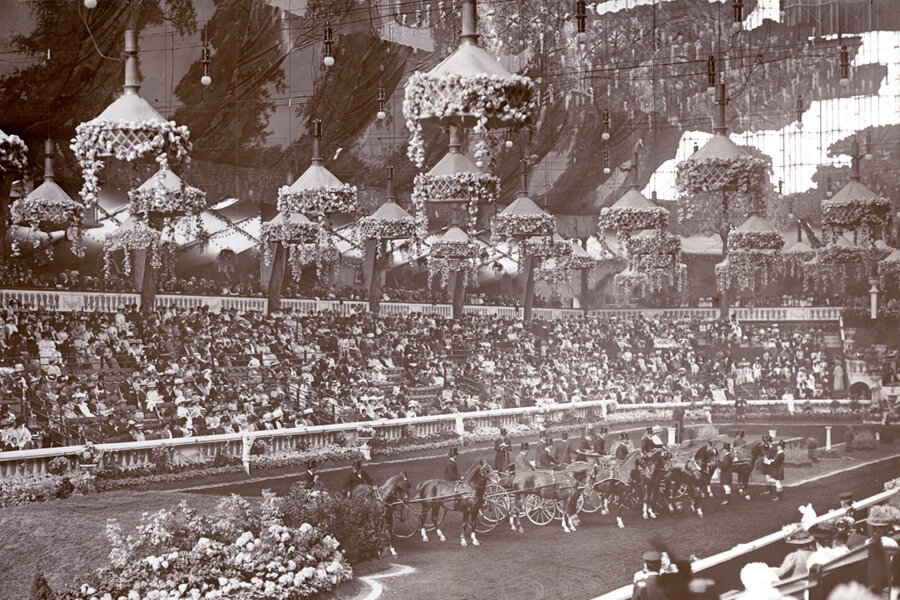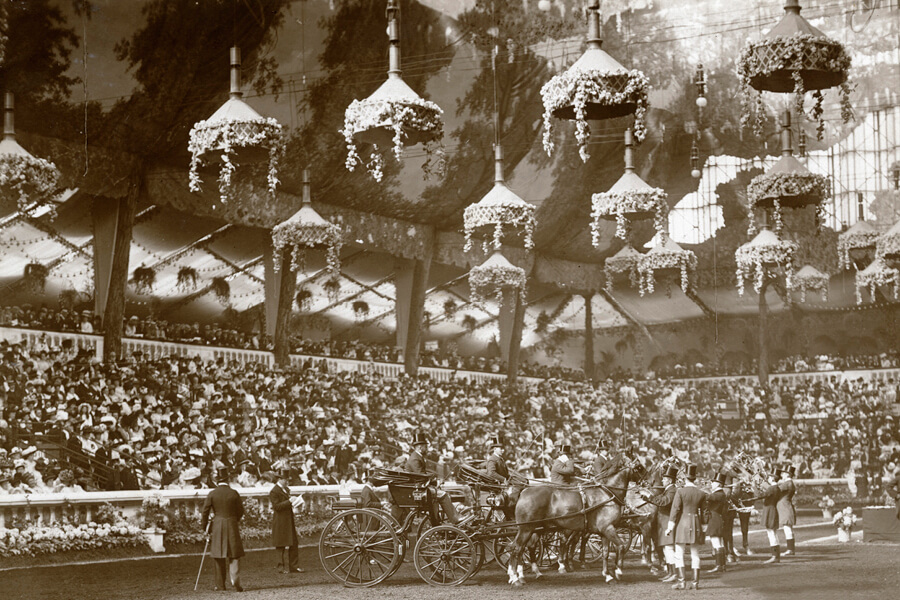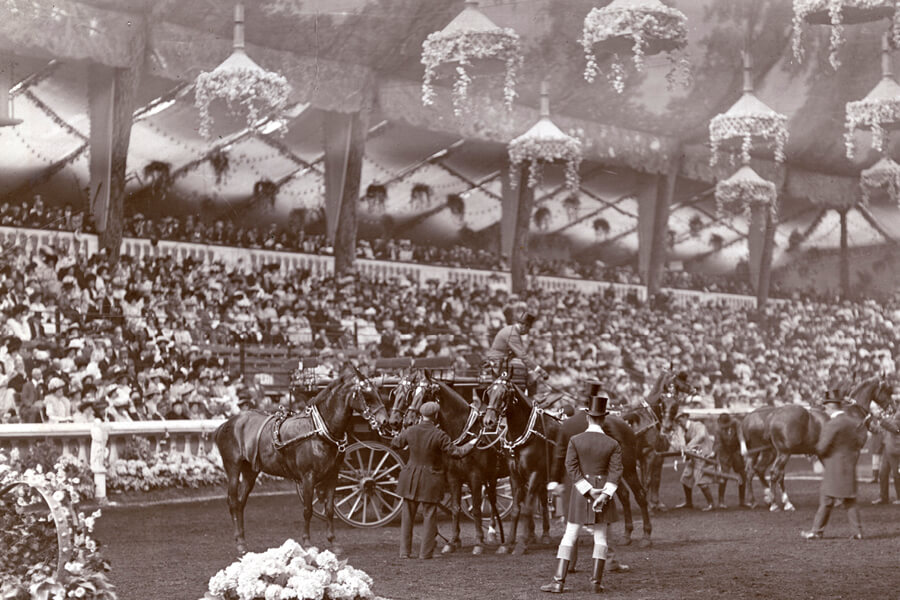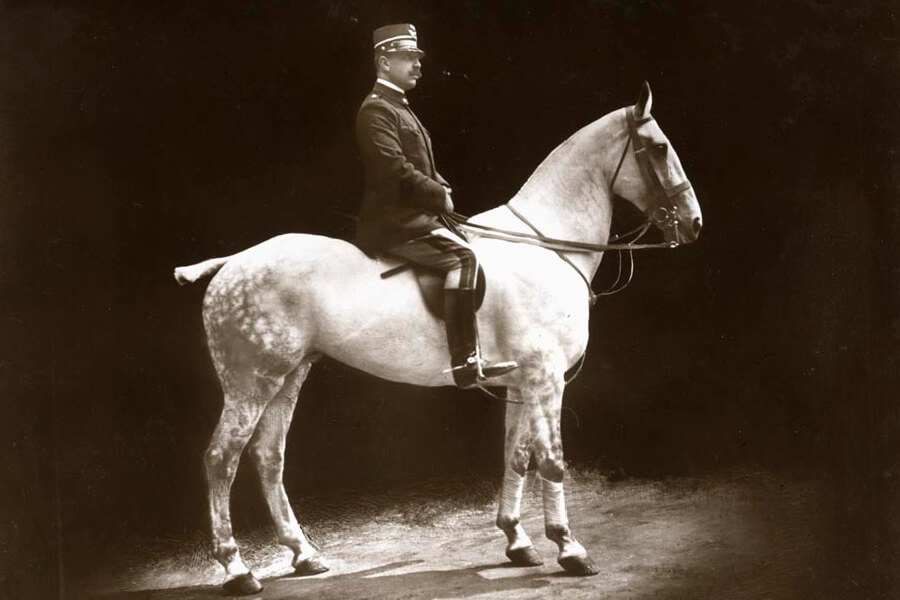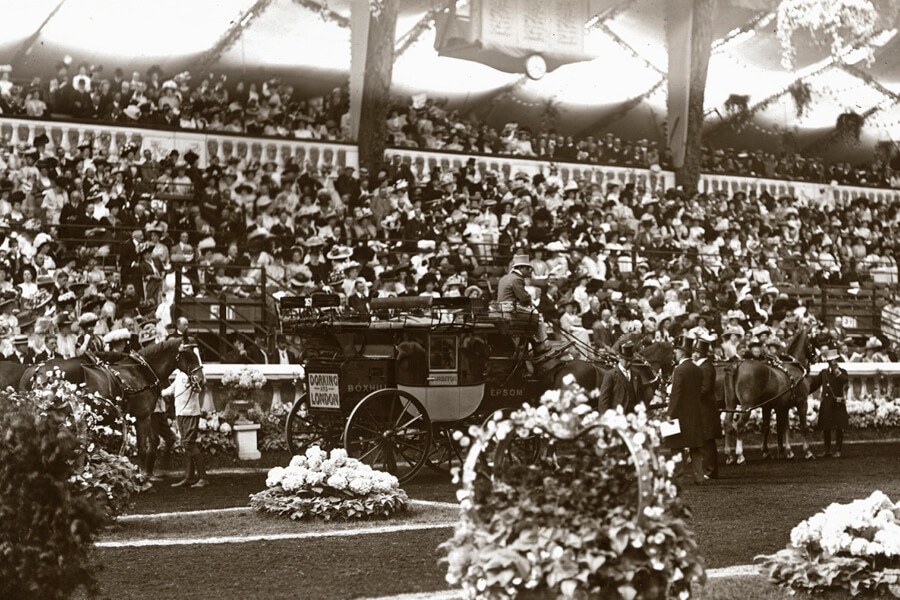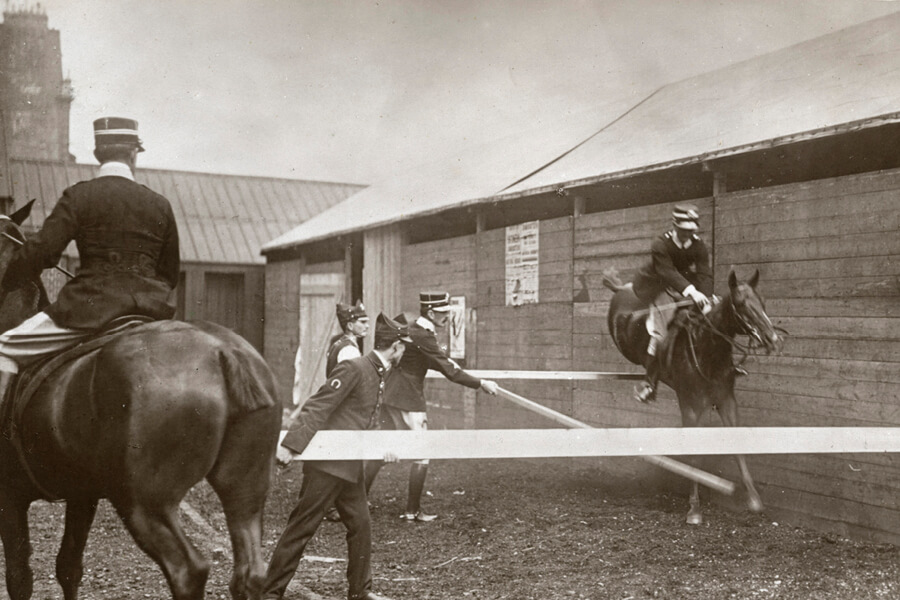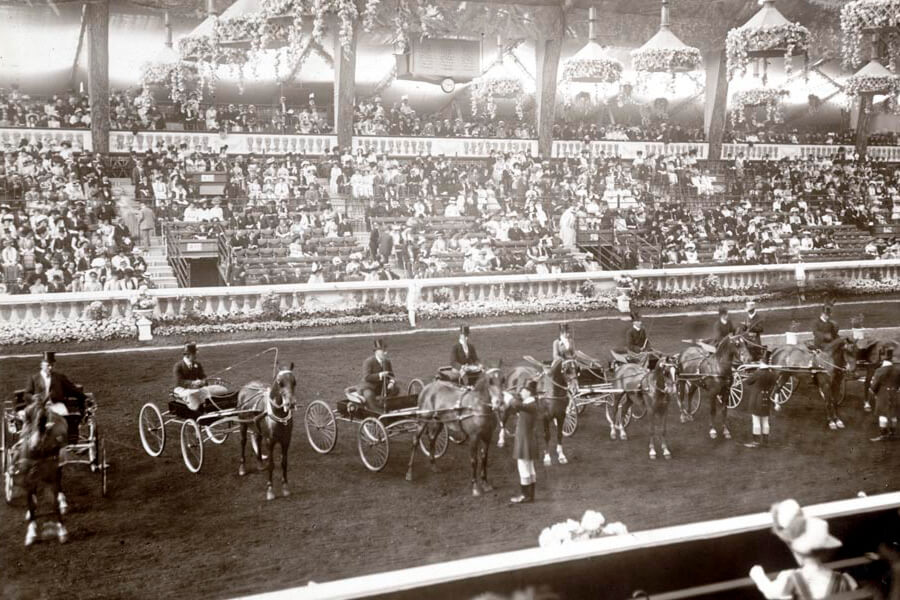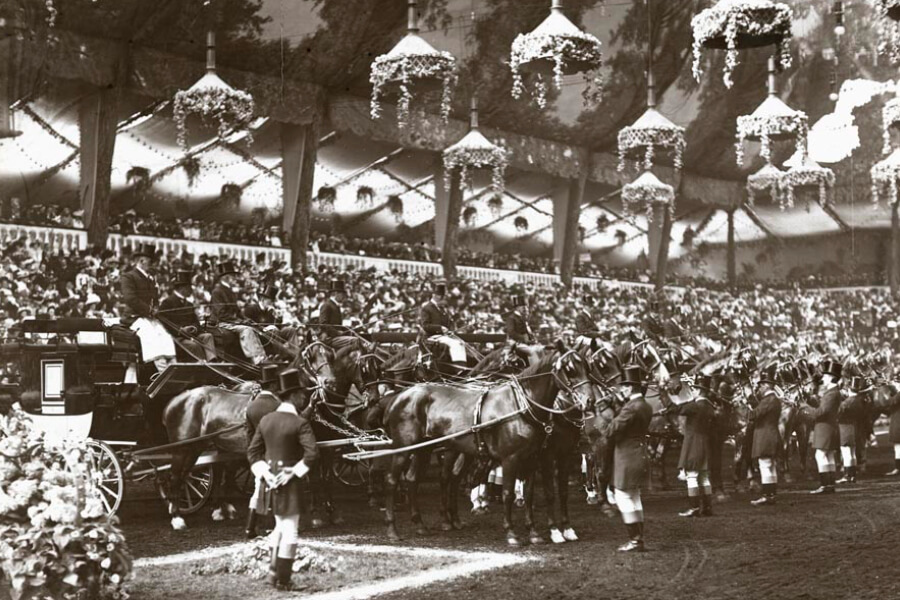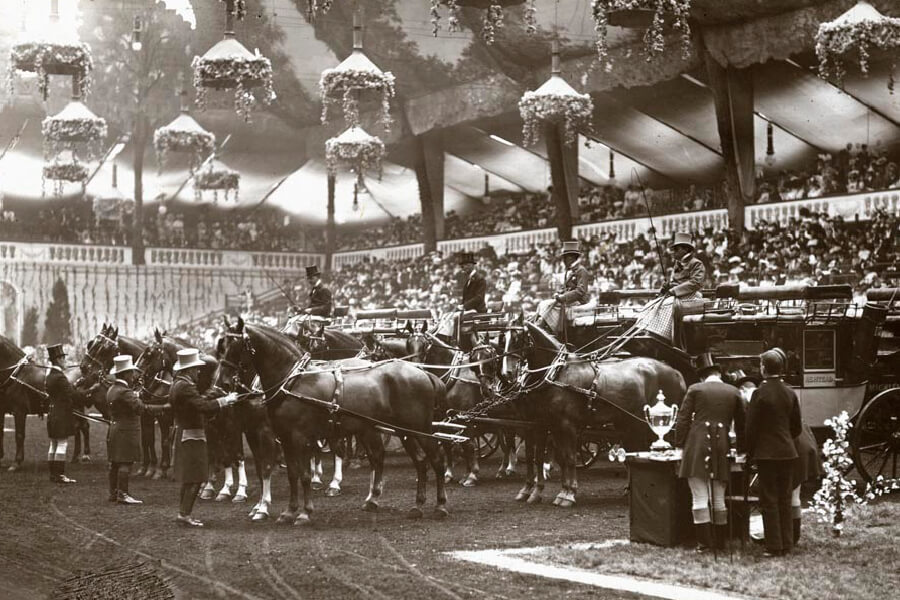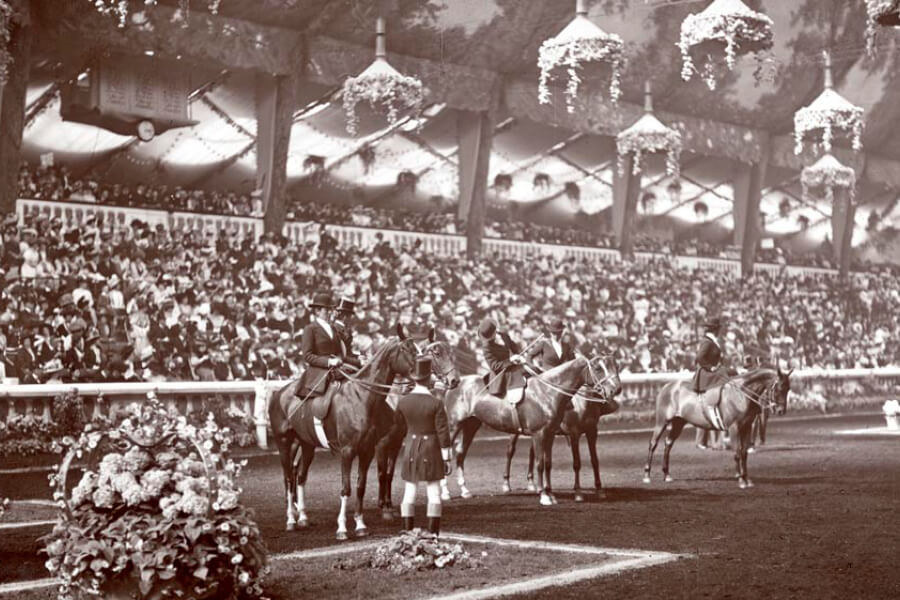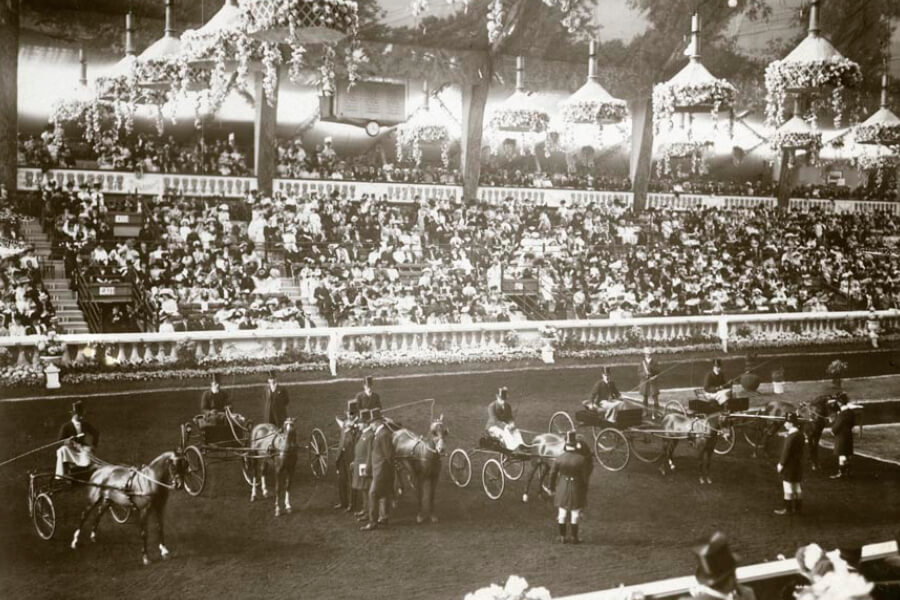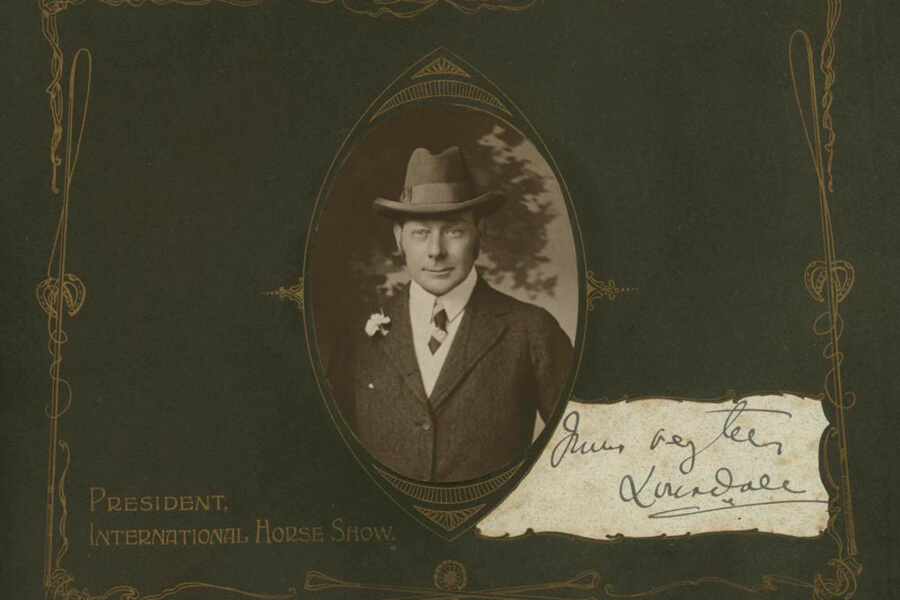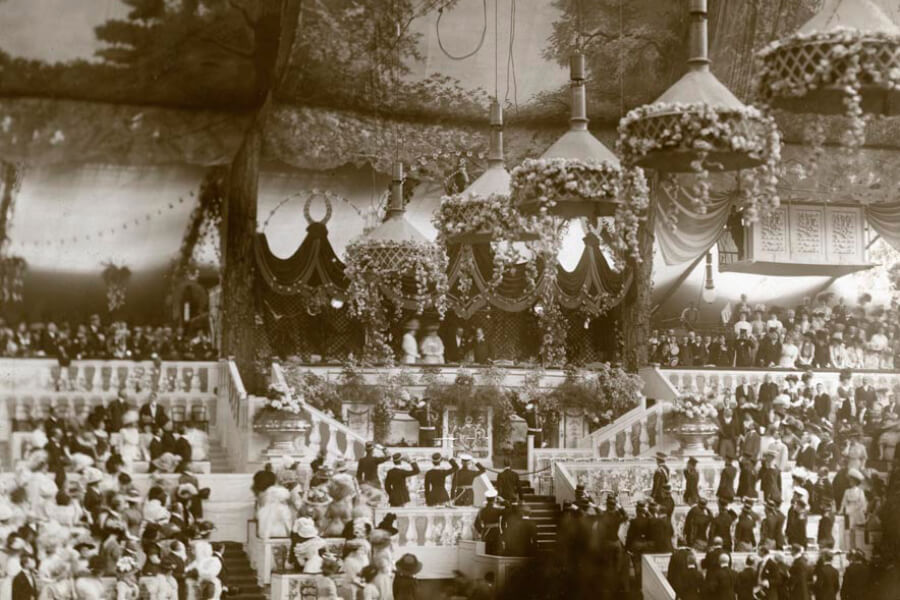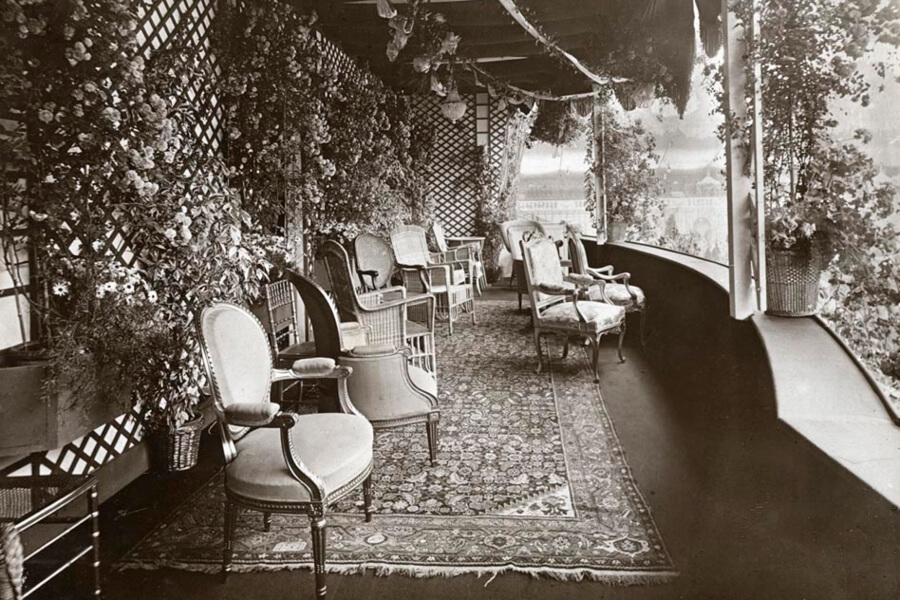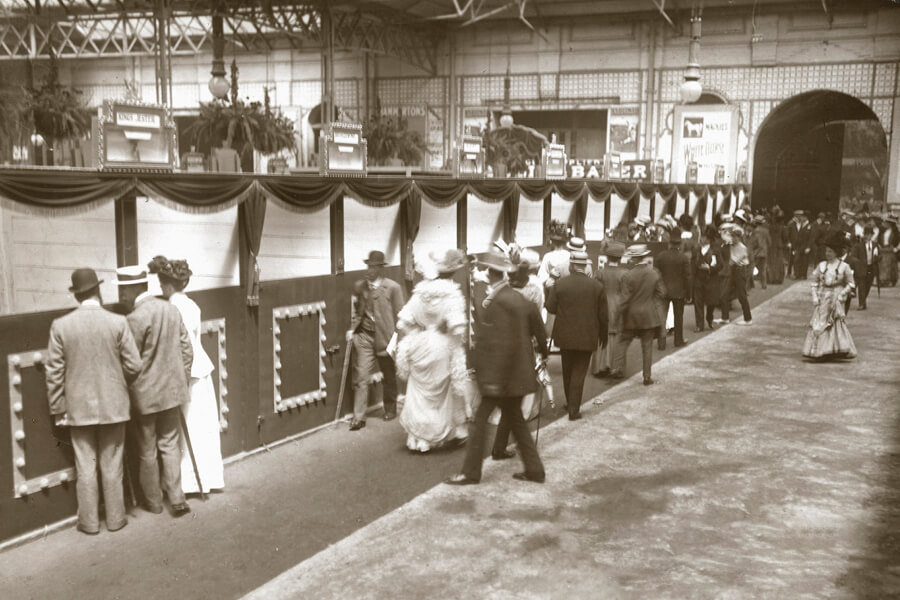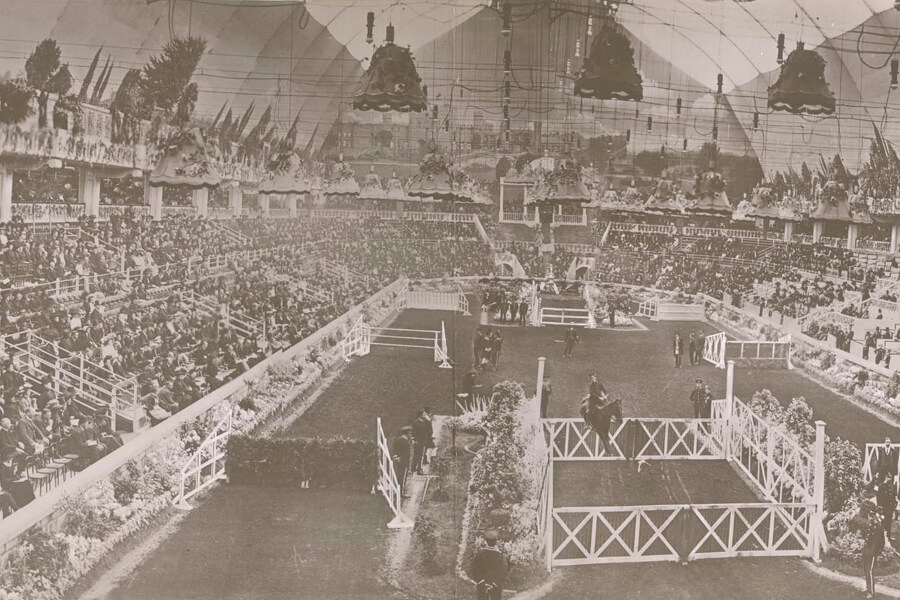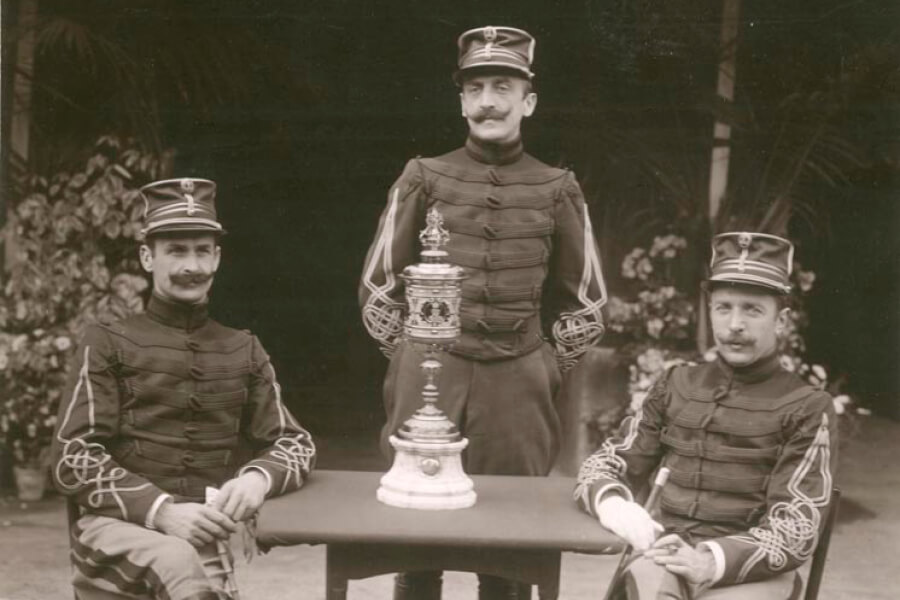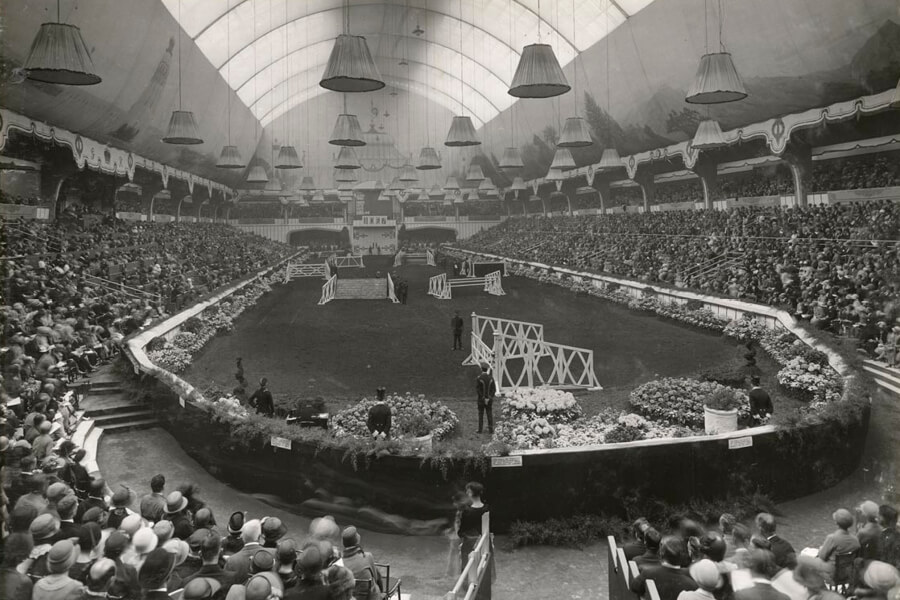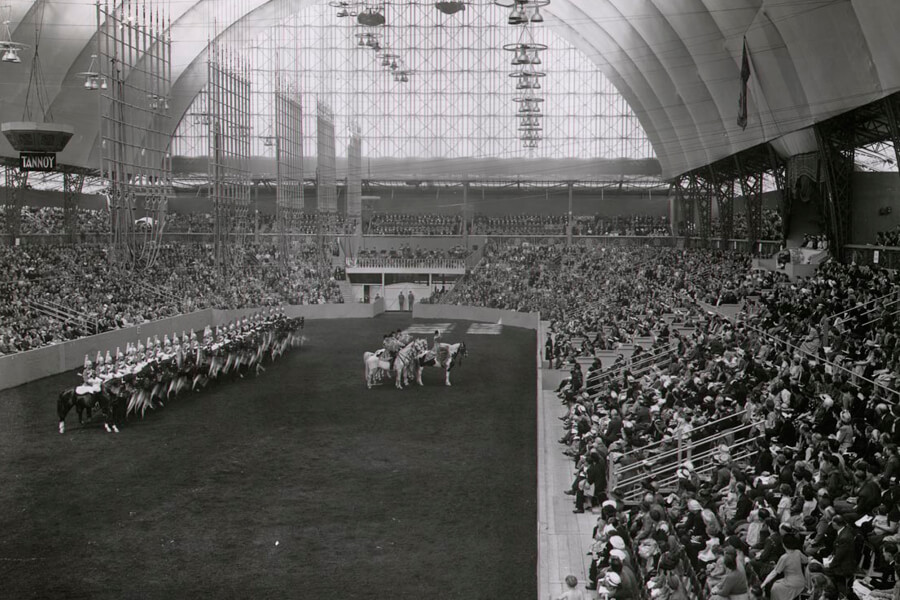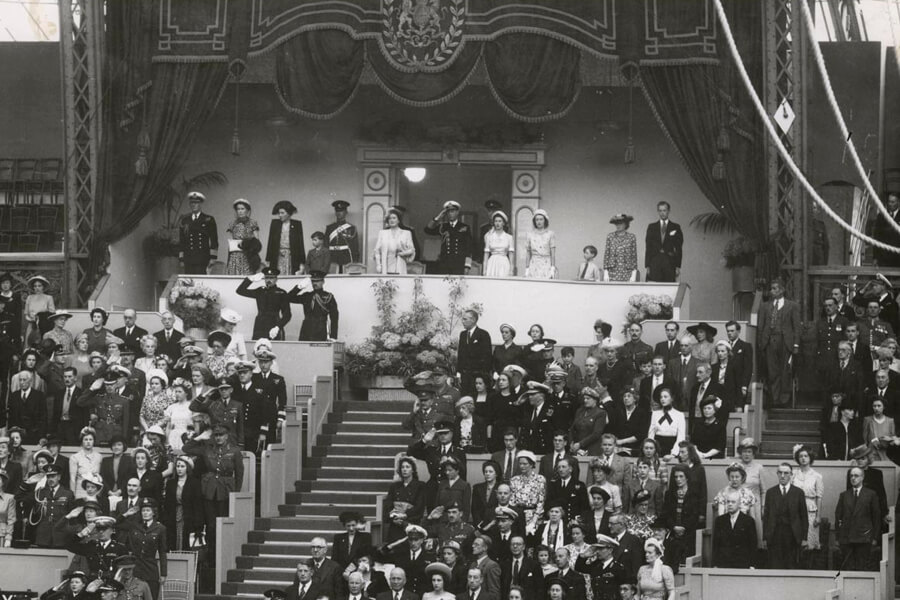A History of London International Horse Show
It is June 1907 in West London. Carriages, motor coaches and pedestrians, all heading toward Olympia Way, crowd Hammersmith Road and Kensington High Street. Every ten minutes a train disgorges more excited passengers at the nearby Kensington Station. Outside the large exhibition venue of Olympia there is a queue of well-dressed ladies and gentlemen and their excited families. The first International Horse Show to be held in London has opened its doors to the public.
Once inside The Great Hall visitors gasp at the flamboyant floral decorations. Large arrangements festoon the chandeliers and displays of trees, palms and potted hydrangeas adorn the balconies. There are even trees and banks of flowers in the arena. In the Royal box an elderly King Edward VII accompanied by Queen Alexandra, smokes a large cigar. His heir, George, Duke of York and his wife Princess Mary and their young children Mary and Henry, Duke of Gloucester have arrived by open-topped carriage to accompany the King and Queen. In the arena the horses of the magnificently polished four-in-hand carriages stand patiently as judges in morning dress discuss the merits of the coaches and the expertise of their top-hatted drivers. Later in the day the crowd gasp at the skill and daring of Gentlemen Officers, many from France, Italy and Belgium and even Russia, as they and their horses tackle the ‘jumping course’. The course that consists of flimsy upright rails, sleepers, picket fences, walls and gates even includes a large turf bank. But the real excitement comes at the end of the day when these dashing officers and British hunting heroes and their brave horses will take on the ‘high jump’. The show closes at 11pm and all the way home wide-eyed spectators re-live the extraordinary events of the day.
The original idea for the show is attributed to a Mr Reginald Gardiner Heaton, a horse breeder from Chatteris in Cambridgeshire. Early in 1906 Mr Gardiner Heaton Esq. invited friends to dinner with the intention of persuading them to organise an international show on similar lines to those in New York, Paris and Brussels. The dinner produces a successful conclusion and the board of his new company of which Reginald Heaton became the Managing Director, a post he held for over 25 years, immediately set to work.
The great sporting peer and patron, Lord Lonsdale, President of the National Sporting Club of Britain and nick-named ‘The Yellow Earl’ after the colour of his livery, was asked and agreed to be the Show’s first President. The roll of Directors so elegantly listed in early programmes included many prominent and wealthy, sporting and aristocratic patrons. No less than 10 Dukes, 11 Marquis’, 54 Earls, 25 Viscounts, 80 Lords, and 28 comparatively ordinary Sirs were made honorary Vice-Presidents.
Demand for the tickets for that first Show exceeded all expectations. According to a feature in the 1934 edition of ‘The Horse’ magazine, some sold to ‘eager visitors for as much as £5.00’ – the equivalent of around £415 today! The same feature also records that ‘boxes were in keen demand at 100 guineas and over’, not far short of around £7,000 at today’s prices. The seemingly lavish budget showed that up to £4,000, the equivalent of roughly £335,000, was spent on decorations, the cost of flowers alone around £1,000 (about £83,000).
Olympia in June became the place to be and the International Horse Show established itself as one of the social events of the annual calendar. ‘In those great and far-off days almost everyone was horse-minded so it was hardly surprising that great success became the under-taking,’ wrote Geoffrey DS Bennett in Horse & Hound in 1954.
Over 500 horses including many from the Continent were entered. Even wealthy sporting American patrons brought their horses over from the United States. The catalogue detailed all classes, entries and prizes and gave a full list of each day’s musical performance.
The schedule of 149 classes included classes for ‘qualified hunters’ and ‘hacks in regular use’. Trotters and roadsters, Shetland ponies – ‘to be driven by ladies or boys under 16 years of age’, carriages, young saddle horses, officer’s charges, trade turnouts and draught horses also featured over the 10 days as well as classes for hunter, polo and hackney stallions. Jumping ‘over the course’ and the ‘high jump’ were included and each day ended with the spectacle of a jumping class. The 12 classes were ‘Open to the World’ and the few rules stipulated that riders were dressed either in ‘uniform or hunting costume’.
For several years the show at Olympia enjoyed much success and social esteem. It was closed down during The First World War and between the World Wars suffered from economic instability and, as the horse became more widely replaced by the combustion engine, a decline in attendances.
In 1939 the last International Horse Show was held at Olympia although was then resurrected in 1947 at White City. However in December 1972, the excitement of a horse show returned to London when Reginald Heaton and Raymond Brooks-Ward decided to bring a horse show back to Olympia. Olympia – The London International Horse Show has since become a highlight of the equestrian calendar. In 1992, Raymond Brooks-Ward unexpectedly died and his son, Simon Brooks-Ward took on the directorship of the Show.
The first FEI World CupTM qualifier for jumping was introduced at Olympia in 1979 and has run every year since. FEI World CupTM Dressage was introduced in 2004 and FEI World CupTM Driving in 2013. All competitions have seen some of the World’s top riders competing such as Nick Skelton, Tim Stockdale, his son Joe Stockdale, Scott Brash, Jodie Hall McAteer, Harry Charles, Carl Hester, Charlotte Dujardin and Lottie Fry.
Recent years have proved interesting. Firstly, the covid pandemic meant that the Show was not able to run in 2020 and then the Olympia Halls announced that their new building developments meant that they were unable to house the Show in 2021 or for the near future as the building work would be too disruptive. This meant a move to Excel Centre in London where the Show has been held since 2021.
The move has meant that opportunities presented themselves to the Organisers. In Excel London there was space to expand the shopping village and put in a Live Zone where influencers such as Esme Higgs (This Esme), Megan Elphick, Harlow Luna White and others appear. And a second arena has been introduced – first seen at the Show in 2023. This has meant that a new Showing Series – The London International Showing Series – has been introduced. Organisers have worked with The British Show Pony Society, the British Show Horse Society and the Agricultural Show Organisers Association to create the series. In addition the new arena has offered the Kennel Club the opportunity to bring in more Dog Agility classes.

